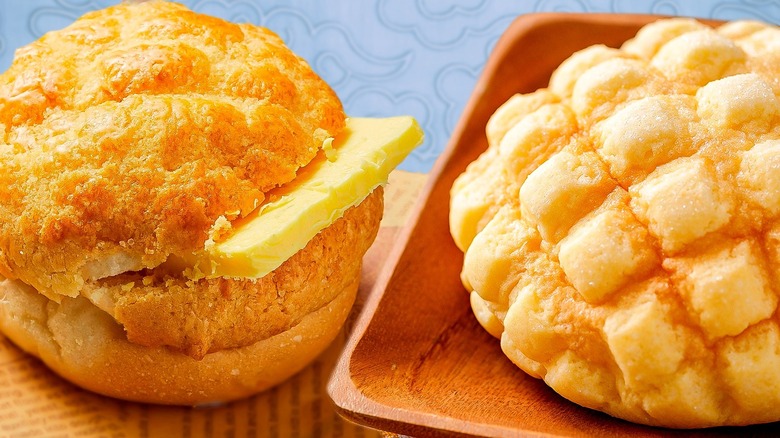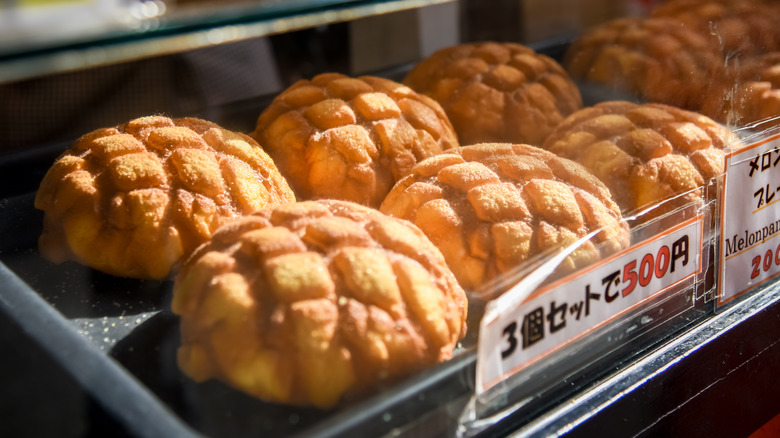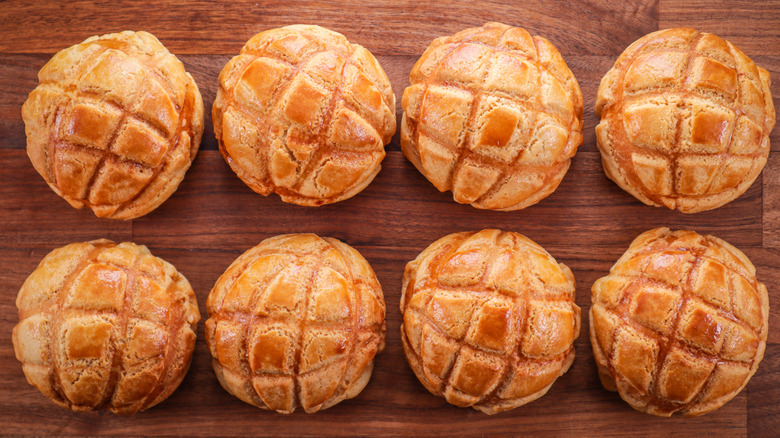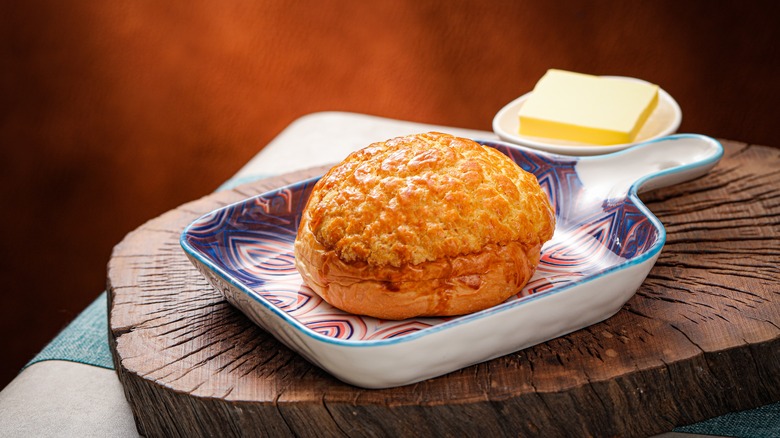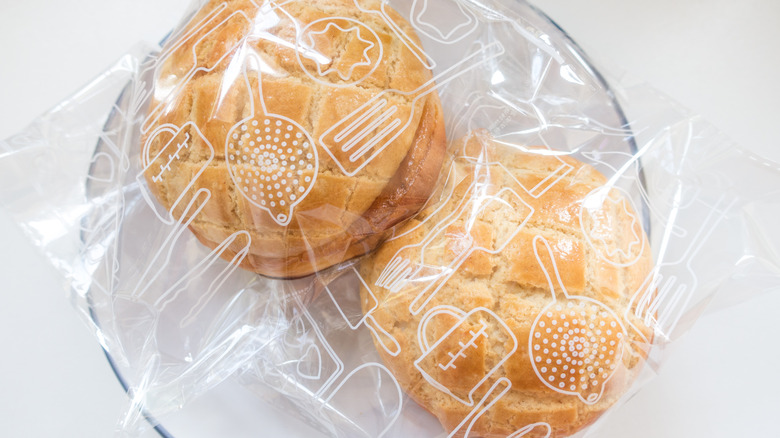What Sets Japan's Sweet Melon Bread Apart From Chinese Pineapple Buns
Whether it's a homemade cinnamon roll or a delectably fluffy Southern biscuit, there's a special magic to a sweet baked good. With their casual and often affordable form, these doughy creations reward with delicious textures and flavors. While Parisian pastries might be particularly renowned, there are delicious renditions home to Asian cultures too.
Two especially beloved examples are Japan's sweet melon bread with Chinese pineapple buns. Despite their respective names, neither pastry involves any fruit. Instead, they're comprised of a beautiful biscuit crust with a sweet, doughy interior, and they take on an instantly recognizable shape as the exterior is scored with aesthetic ridges. These ridges are possibly what provided the baked goods with their misleading names.
Both are delicious, but the two pastries aren't identical — they utilize different dough bases and incorporate variable fillings. Their numerous interpretations incorporate many regional varieties, available from esteemed specialty shops to everyday convenience stores.
What is Japanese sweet melon bread?
Japan's sweet melon bread is a two-part pastry, consisting of a fluffy interior dough topped with a crispy cookie-like crust. The pastry doesn't actually contain any of the titular fruit. Many theories circulate explaining its name — some cite the top's cross-hatched pattern resembling a Korean melon, while others believe a metal mold called meron-gata inspired its nomenclature. Regardless, it has been a pastry enjoyed in Japan for decades, with popularization occurring in the mid-20th century.
Although now readily found in many bakeries and even convenience stores, Japanese sweet melon bread is a labor-intensive pastry. It starts with a kneaded dough containing two differing flours, sugar, yeast, eggs, and milk, and is stuffed with butter. It's then enveloped in an additional biscuit dough assembled with a similar assortment of components but without the yeast. This external layer is scored into a distinct pattern, and then the breads are baked to completion. Melon bread can also occasionally be found with fillings, with custard and matcha being particularly popular options.
What are Chinese pineapple buns?
Also referred to as bolo bao, these similar-looking pastries are popular across the Chinese diaspora but are especially intertwined with Hong Kong. They don't contain any pineapple, with the fruit nomenclature instead alluding to the textured top. Just like the Japanese sweet melon bread, Chinese pineapple buns are made of an interior bread dough, wrapped in a crumbly, almost buttery sugar cookie-like exterior. However, this pastry employs heavy cream to create a denser, more saturated interior. Plus, the outside biscuit crust is glazed with egg yolk for a beautiful golden hue.
Pineapple buns are a staple of Cantonese-style bakeries, often enjoyed alongside a cup of perfectly prepared milk tea. They come in both sweet and savory types, with modern chefs reinventing them into sandwich bread and other creative interpretations. However, in their most classic form, they're sweet and crispy and are traditionally sliced and filled with a square of butter. Such an easy-to-love palate lends them a nostalgic factor and enables them to be enjoyed as an accessible treat by families around the globe.
Sweet melon bread and pineapple buns have different textures
These Japanese and Chinese double-layer pastries clearly share a lot of overlap, but there are some common textural distinctions between the two styles that help set them apart. The interior of Japanese sweet melon bread is drier and more robust with an airy softness when done right. It's noted for its delicious, crispy exterior defined by its rigid cookie-like crust. Chinese pineapple buns also employ an external layer, but it's more crumbly in nature. The same goes for the interior of the pastry, which is dense, moist, and flakes apart into little crumbs.
These different consistencies are caused by the baking components and procedure. While pineapple buns utilize heavy cream in their dough base, sweet melon bread instead opts for yeast and a different flour composition. As a result, the interiors take on distinct textures despite similar aesthetic appearances from the outside.
The two pastries both come in different flavors
While both pastries don't traditionally involve a filling, modern interpretations have expanded to a large variety of flavors. To align with the name, some Japanese bakers have started to inject melon puree or syrup into the bun. Others fill the interior with cream, ice cream, or even melted chocolate. Plus, the dough can be infused with delicious additions like culinary-grade matcha, strawberry, and pumpkin. Throughout Japan, there's a large variety of melon breads unique to specific bakeries, noted by their beautiful colored appearances.
Pineapple buns also take on many different fillings but less often change in color. Instead, bakers add specific toppings to notate what's stuffed inside. One of the most classic deviations is Bo Lo Yau, which integrates a thick slice of butter. Other common options include red bean paste, custard, versatile taro root, and ice cream. And, unlike melon bread, the pasty also comes in savory forms and can be filled with crispy pork and cheese.
